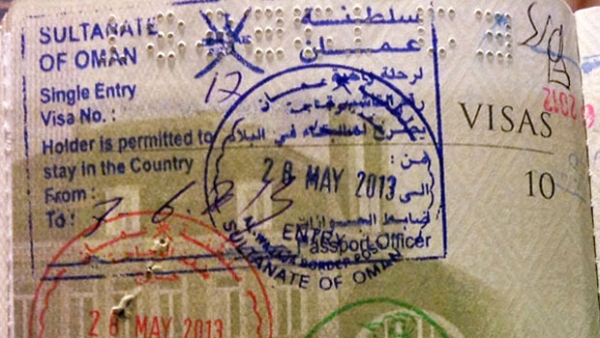
Muscat: Tourists can now pay OMR5 to enter the Sultanate for 10 days, according to a decree by the Royal Oman Police.
The Inspector General of Police and Customs issued decision No. 129/2018, to amend some of the provisions of the Executive Regulations of the Aliens Residence Law.
Two new visa fees have been added to the list of entry visas in Article 29 of the regulation on residence law 63/96.
According to Article 9 of the decree, "The fee for visa transfer application is OMR50, non-refundable." The second addition is an "OMR5" fee for a 10-day tourist visa. Among the amendments include dividing tourist visas into three sections: 10 days, one month and one year.
Welcoming this, travel agents said that this will bring in more tourists to Oman. “The OMR20 visa fees were too high. It is good that the visa fees were brought down,” a travel agent at New Star LLC said.
He also said: “Several other countries are trying to facilitate visitation to their countries by offering electronic visas, free of charge visas, visit visas on arrival, long term visas, etc. In such a competitive environment, it is great that the visa fees were cut down to accommodate more tourists.”
Tourism in Oman grew by almost 5 per cent in 2017, according to recent figures published by the Ministry of Tourism.
With a total of 3 million and 300 thousand tourists visiting last year, the Sultanate enjoyed a strong 4.7 per cent year-on-year growth in the number of international travellers, further illustrating the success of Oman’s economic diversification strategy.
Boosted by Oman’s dedication to boosting non-oil exports as part of Vision 2040 and the National Programme for Enhancing Economic Diversification, Tanfeedh, tourism has continued to perform as a major engine for job creation, economic development, and sustainable growth. Registering a successive record number of travellers since 2015, the new figures signal the continued progress of the government’s National 2040 Tourism Strategy, which aims to boost the sector’s contribution to GDP by 6 per cent.
Oman’s 20-year strategy has already begun bearing fruit and is well on track to raise visitor numbers to 5 million per annum by 2040. The strategy hinges on developing dedicated tourism clusters in destinations such as Muscat, Musandam, Al Hajjar Mountains, Frankincense trail in Salalah, and multiple desert areas popular with adventure tourists. In addition, the ministry aims to employ as many as 500,000 people in the tourism sector, with expected investments totalling OMR19 billion, of which only 12 per cent will be from the public sector.